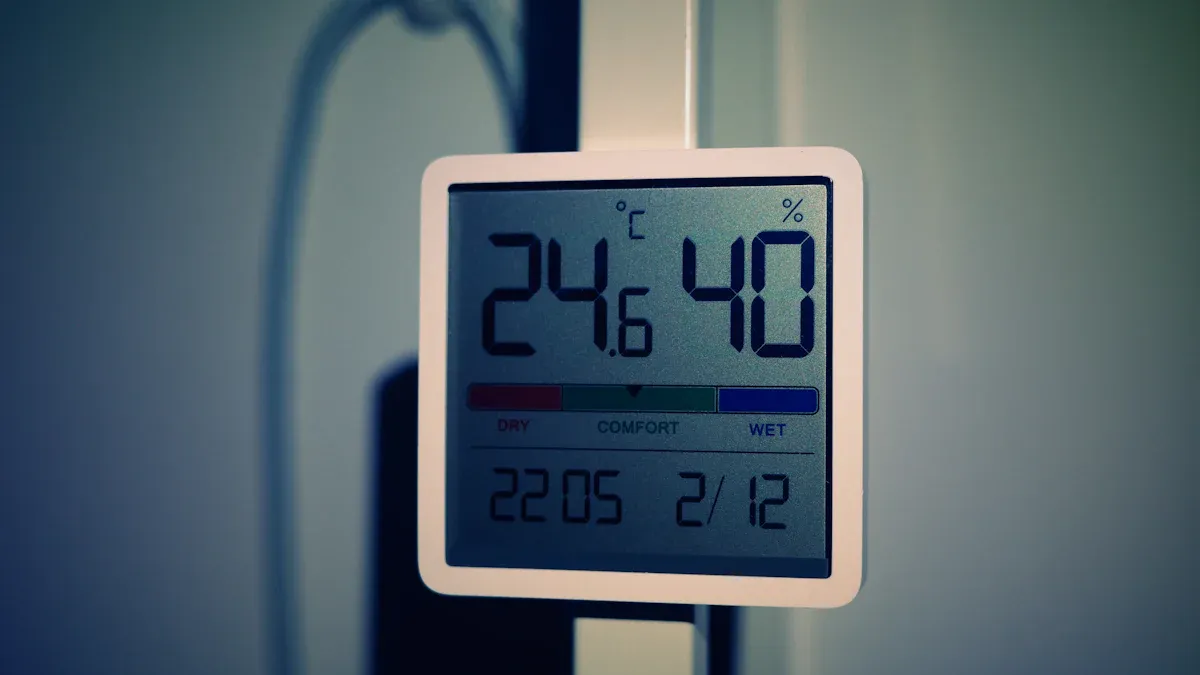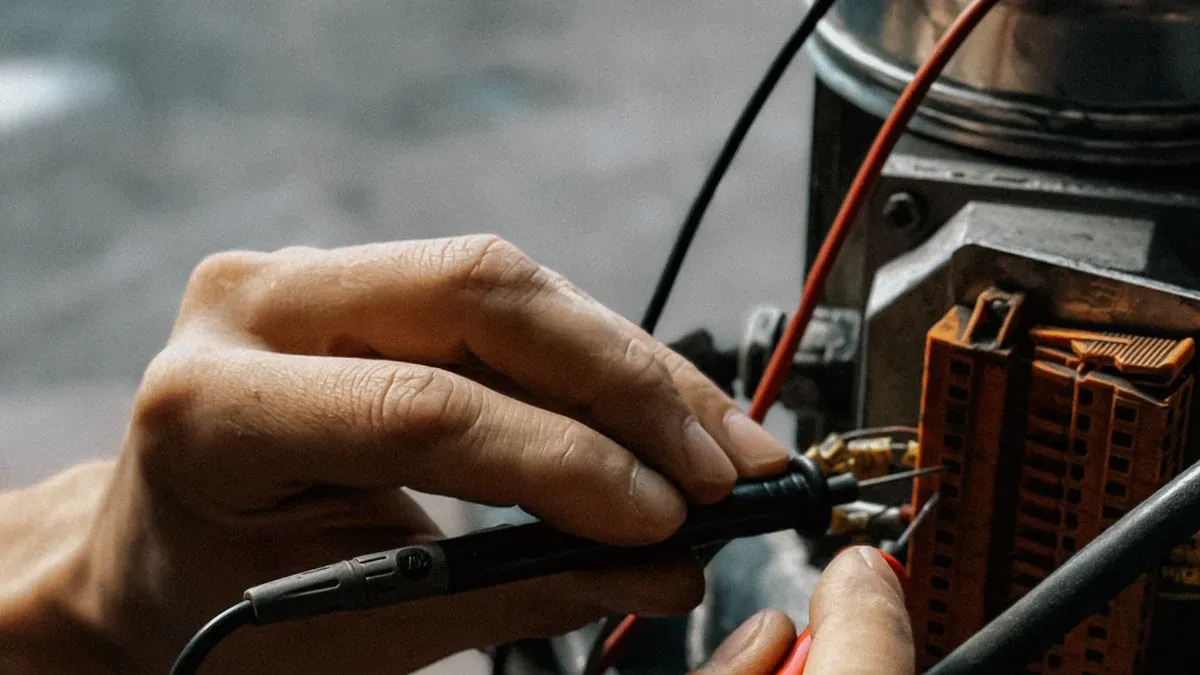
You can significantly improve battery life in your uninterruptible power supply (UPS) through simple, consistent habits. These tips for all UPS systems involve four key actions: controlling the environment, performing regular battery maintenance, managing the load, and planning for battery replacement.
Did You Know? The financial impact of power outages is growing. In 2023, over half of reported data center outages cost between US$100,000 and US$1 million.
Proper maintenance for your uninterruptible power system ensures your UPS battery is ready. This protects your electronics and provides reliable power when it matters most.
Optimize the Operating Environment

The physical space where you keep your UPS has a huge impact on its performance and lifespan. You can improve battery life by managing three simple environmental factors: temperature, ventilation, and cleanliness. A stable environment is the first step to a reliable UPS.
Maintain Optimal Temperature
Temperature is the single most critical factor for your UPS battery. You should keep your UPS in a climate-controlled room with a temperature between 68°F and 77°F (20-25°C). High heat dramatically shortens the lifespan of the battery.
Critical Alert: The Rule of Halves 🌡️ For every 15°F (about 8.3°C) increase above the ideal temperature range, the service lifespan of your UPS battery can be cut in half.
Keeping your UPS cool is the most effective way to protect your investment and ensure the battery is ready when you need it.
Ensure Proper Ventilation
Your UPS generates heat during operation and needs clear airflow to cool itself. Placing a UPS in a tight cabinet or against a wall traps heat. This forces the internal components to run hotter, which can lead to premature failure. To prevent this, follow this simple rule:
- Provide Clearance: Always leave at least 2-4 inches of open space around all sides of the UPS.
- Avoid Enclosures: Do not operate the UPS inside a sealed or poorly ventilated cabinet.
Proper airflow allows the UPS to cool itself efficiently.
Keep the Unit Clean and Dust-Free
Dust is a silent enemy to your UPS. Over time, dust and debris can accumulate on the unit and block critical air vents. This buildup acts like an insulating blanket, trapping heat and causing the UPS to overheat. In some cases, dust can even cause short circuits. You can easily prevent this with basic cleaning. Periodically inspect your UPS and gently clean its vents with a can of compressed air or a vacuum cleaner with a soft brush attachment.
Proactive UPS Battery Maintenance

A healthy environment is the foundation, but proactive UPS battery maintenance is how you ensure long-term reliability. This preventive maintenance approach helps you find small problems before they cause a major outage. Performing routine battery maintenance will help you protect your equipment and improve battery life. This regular care is a core part of managing your UPS systems.
Conduct Regular Visual Inspections
You should perform regular visual inspections of your UPS battery at least once a month. This simple maintenance check helps you spot physical signs of failure early. Always wear proper safety gear, like insulated gloves, before inspecting the battery. Look for these specific warning signs:
- Swelling or Bulging: The battery case looks bloated, which indicates dangerous internal pressure.
- Leaking Fluid: Any sign of leaking electrolyte is a serious hazard and means the battery has failed.
- Corrosion: A white or green powder on the terminals can block power and cause heat buildup.
- Unusual Smells: A rotten egg or sulfur smell points to internal damage.
Safety First! ⚠️ If you see any of these signs, the UPS battery is likely at the end of its life. You should plan for immediate and safe replacement.
Perform Scheduled Self-Tests
Most modern UPS units have a built-in self-test function. This is a quick, internal check that confirms the battery is ready to work. You should run this test monthly. It is different from a full load test, which simulates a real power outage and is usually performed by a technician once a year. Regular self-tests provide peace of mind that your UPS is prepared.
Monitor Voltage and Health
Monitoring your battery’s voltage gives you a clear picture of its battery health. For a standard 12V lead-acid battery, the float voltage should be around 13.5V to 13.6V. This shows the charger is correctly maintaining the battery without overcharging it. While technicians can measure this during maintenance, some advanced UPS systems offer automated monitoring for constant updates.
Check Terminal Connections
Loose battery terminal connections are a hidden danger. They can interfere with the flow of electricity, reduce the power output of the UPS, and generate excess heat. During your UPS battery maintenance checks, ensure all connections are tight and secure. This simple step is a crucial part of your maintenance schedule and prevents unexpected failures.
Manage Load and Discharge Cycles
How you use your UPS directly affects its battery. Managing the electrical load and understanding discharge cycles are essential ways to improve battery life. These habits ensure your UPS has maximum battery runtime when you need it.
Avoid Overloading the UPS
You should never connect equipment that demands more power than your UPS can supply. Overloading the unit can cause it to shut down during an outage, offering no protection. To find your total load, you can use a manufacturer’s online sizing tool. Or, you can calculate it yourself:
- List all devices you will connect to the UPS.
- Find the wattage for each device on its label or in its manual.
- Add the wattages together to get your total power requirement.
Keeping your load below 80% of the UPS capacity is a good rule. This provides a safety buffer and helps increase UPS battery backup time and efficiency. A properly sized UPS provides better runtime.
Prevent Deep Discharges
You should avoid letting your UPS battery drain completely. Repeatedly discharging a UPS battery below 50% causes permanent damage. This process, known as deep discharging, creates large, uneven crystal blocks inside the battery. These crystals warp the internal plates and make the battery difficult to recharge, which shortens its lifespan. Frequent discharging without enough time to fully recharge also damages the UPS battery.
Understand Discharge Cycles and Battery Life
A discharge cycle is one instance of using and recharging the battery. The depth of that discharge dramatically impacts the total number of cycles the battery can handle. A shallow discharge uses only a small amount of the battery’s power, while a deep discharge uses most of it.
Key Insight: Discharge vs. Lifespan A UPS battery that is regularly discharged to only 30% of its capacity can last for over 1,000 cycles. The same battery may only last 200-300 cycles if it is frequently drained to 80% of its capacity.

Shallow discharges put less stress on the UPS battery. This simple practice helps increase UPS battery backup time over the unit’s entire lifespan. Proper charging logic will also prevent overcharging, another source of damage. Managing both discharging and overcharging is key for a healthy battery and reliable runtime. This ensures you get the best possible battery runtime from your UPS.
Strategic Replacement for UPS Systems
Even the best-maintained UPS battery will eventually fail. A strategic replacement plan is the final piece of the puzzle to ensure your UPS systems provide uninterrupted power. This means knowing when to act and what your options are.
Know Your Battery’s Lifespan
You need to understand the difference between a battery’s design life and its actual service life. The design life is determined in a perfect lab, but the service life reflects real-world conditions. For the most common UPS battery type, the service life is much shorter.
| Battery Type | Design Life | Service Life |
|---|---|---|
| Standard VRLA | 5-10 years | 3-5 years at 20°C |
The typical lifespan for a sealed lead-acid (VRLA) battery is three to five years. Its ability to hold a charge often starts to fade around year three.
Replace Batteries Proactively
Waiting for a UPS battery to fail completely is a major risk. It can lead to unexpected downtime, data corruption, and equipment damage. You should replace old batteries before they reach the end of their expected lifespan.
Pro Tip: Avoid Downtime 💡 A regular ups battery replacement schedule is not an expense; it is an investment in reliability. Proactive replacement prevents catastrophic failures when you need power the most.
For most VRLA batteries, a replacement every three years is a safe and effective practice.
Keep Detailed Service Records
You can predict when a battery needs replacement by keeping good records. A service log helps you track the health of your UPS battery over time. Your log should include key details from each inspection:
- Voltage readings
- Battery temperature
- Results from self-tests
- Notes on any physical changes
These records create a baseline. You can then spot downward trends in performance that signal the battery is nearing the end of its lifespan.
Consider Modern Battery Technologies
When it is time for a replacement, you can consider newer battery types. Lithium-ion batteries have a higher upfront cost but offer a much longer lifespan, often lasting 8 to 15 years. This technology can extend the lifespan of your entire UPS setup. Because they last so long, they can lower the total cost of ownership and reduce the number of replacements your UPS will need. This makes them a smart long-term choice to improve your battery lifespan.
You can improve battery life and protect your equipment with a few key habits. This consistent maintenance ensures your UPS is always ready.
Your Action Plan for Reliability 🛡️
- Keep the unit cool and clean.
- Perform regular battery maintenance checks.
- Manage the electrical load effectively.
- Replace the battery on a schedule.
These simple actions maximize the return on your investment. You gain peace of mind knowing your power protection is reliable when you need it most.
FAQ
How often should I replace my UPS battery?
You should replace your ups battery every 3 to 5 years. Waiting for it to fail completely puts your connected equipment at risk. Proactive replacement is one of the most effective tips for ensuring reliability. This keeps your battery ready for an outage.
Can I increase my UPS runtime?
Yes, you can increase your battery runtime. A lower electrical load gives you a longer runtime. You can improve battery runtime by connecting fewer devices to the unit. This simple action extends the available runtime when the power goes out.
What is the most important tip for battery life?
The most important of all our tips is keeping the unit cool. High heat is the biggest enemy of your battery. You should operate your uninterruptible power supply between 68-77°F (20-25°C). This provides the best performance and overall runtime.
Does turning off my UPS save the battery?
No, you should keep your UPS on at all times. The unit needs to stay plugged in to keep its battery charged and ready. Turning it off can shorten the battery’s life and reduce its available runtime.

